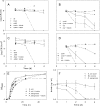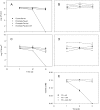Indole production promotes Escherichia coli mixed-culture growth with Pseudomonas aeruginosa by inhibiting quorum signaling
- PMID: 22101045
- PMCID: PMC3255741
- DOI: 10.1128/AEM.06396-11
Indole production promotes Escherichia coli mixed-culture growth with Pseudomonas aeruginosa by inhibiting quorum signaling
Abstract
Indole production by Escherichia coli, discovered in the early 20th century, has been used as a diagnostic marker for distinguishing E. coli from other enteric bacteria. By using transcriptional profiling and competition studies with defined mutants, we show that cyclic AMP (cAMP)-regulated indole formation is a major factor that enables E. coli growth in mixed biofilm and planktonic populations with Pseudomonas aeruginosa. Mutants deficient in cAMP production (cyaA) or the cAMP receptor gene (crp), as well as indole production (tnaA), were not competitive in coculture with P. aeruginosa but could be restored to wild-type competitiveness by supplementation with a physiologically relevant indole concentration. E. coli sdiA mutants, which lacked the receptor for both indole and N-acyl-homoserine lactones (AHLs), showed no change in competitive fitness, suggesting that indole acted directly on P. aeruginosa. An E. coli tnaA mutant strain regained wild-type competiveness if grown with P. aeruginosa AHL synthase (rhlI and rhlI lasI) mutants. In contrast to the wild type, P. aeruginosa AHL synthase mutants were unable to degrade indole. Indole produced during mixed-culture growth inhibited pyocyanin production and other AHL-regulated virulence factors in P. aeruginosa. Mixed-culture growth with P. aeruginosa stimulated indole formation in E. coli cpdA, which is unable to regulate cAMP levels, suggesting the potential for mixed-culture gene activation via cAMP. These findings illustrate how indole, an early described feature of E. coli central metabolism, can play a significant role in mixed-culture survival by inhibiting quorum-regulated competition factors in P. aeruginosa.
Figures





References
-
- Balzer GJ, McLean RJC. 2002. The stringent response genes relA and spoT are important for Escherichia coli biofilms under slow-growth conditions. Can. J. Microbiol. 48:675–680 - PubMed
-
- Beveridge TJ. 1981. Ultrastructure, chemistry, and function of the bacterial wall. Int. Rev. Cytol. 72:229–317 - PubMed
Publication types
MeSH terms
Substances
Associated data
- Actions
LinkOut - more resources
Full Text Sources
Molecular Biology Databases
Research Materials
Miscellaneous

